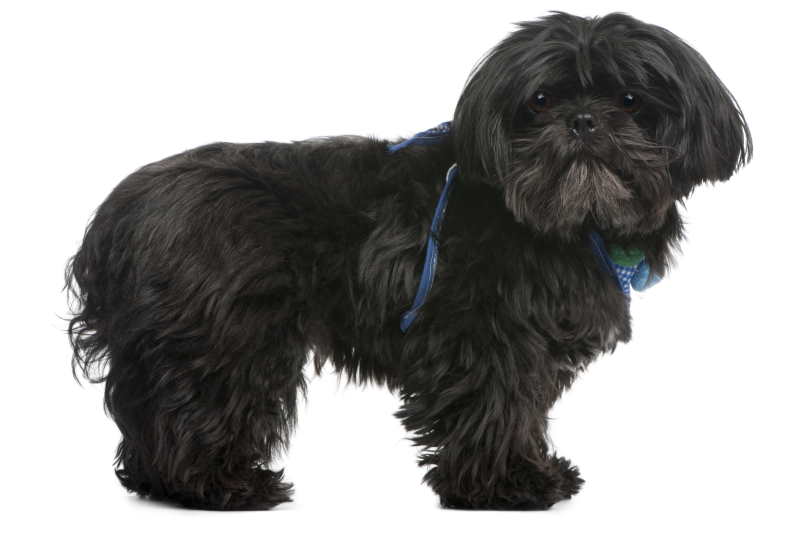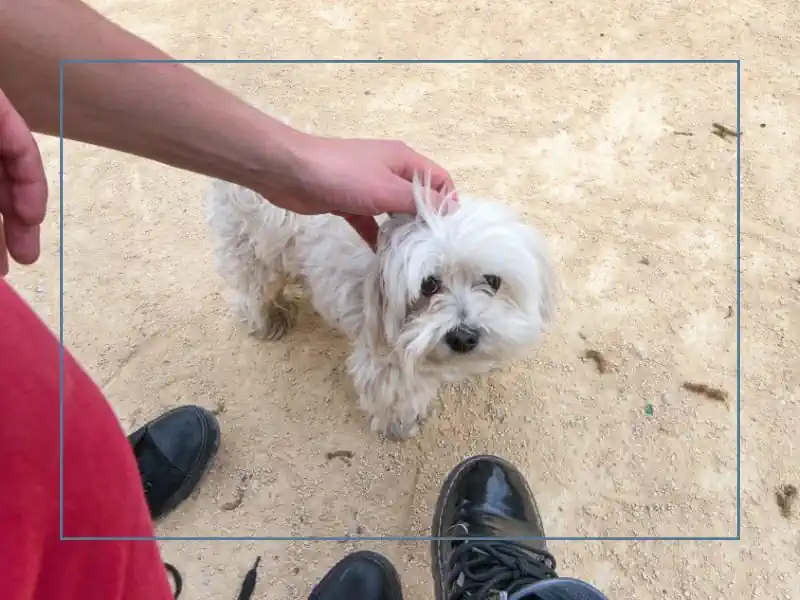Can a Dog Wear a Harness All of the Time?
WRITTEN BY STACY | EVERYTHINGSHIHTZU.COM
If your dog tends to tug on their leash or has respiratory issues, you might find using a harness the better option for walking your pup.
Attaching a leash to a harness takes the pressure off of your pup’s throat, and it also gives you more control of your pet.
Yet, you likely would rather not have to deal with taking the harness off your dog and putting it back on constantly.

Technically, a dog can wear a harness most of the time, but there are some exceptions. For example, it’s best (and more comfortable for your dog) to remove the harness at night.
Also, if your dog has long hair, then keeping the harness on for extended periods could lead to tangles and matted fur.
So it may be a good idea to give your dog a break from the harness and not leave it on 24/7.
Harnesses come in a variety of styles and materials.
Therefore, you can try different ones on your pup to find the one that works the best. Plus, it’s important that you choose a harness that fits well while providing the most comfortable fit.
Reasons You Shouldn’t Use a Dog Harness
Dog harnesses are great solutions for leash tuggers and young puppies that can get caught up in a leash on a collar.
Also, specific no-pull harnesses can discourage your dog from pulling on the leash since the action doesn’t help them move forward.
However, there are some times and reasons when you’re better off not using a dog harness.
First, a dog harness is not a substitute for a collar. A dog’s collar has a primary purpose as a means of identification.
You should have current ID tags for your dog that go on their collar, helping identify them if they get lost.
Therefore, even when your pup does have on a harness, leave their collar on too.
If, for some reason, your pup slips out of their harness, they’ll still have on their tags. Just make sure, when your dog has on both items, the collar and tags aren’t caught up under the harness.
If your dog is well-trained on a leash, doesn’t tug, and is a larger breed, then you might not have a need for the harness. Your dog could do just fine with a leash on its collar. However, this doesn’t mean a harness is a bad idea.
In these cases, it just becomes a matter of personal preference for both you and your dog.
Conversely, using a harness doesn’t give you a free pass to avoid training your dog to walk on a leash.
In fact, while no-pull harnesses discourage tugging, most regular harnesses can encourage your dog to pull. This is because the pulling doesn’t result in your dog choking, etc.
Therefore, if you don’t train your dog to walk on a leash properly, using a harness could set up (or exacerbate) some bad habits.
Again, the best solution is to always work with your pup on how to walk on a leash, no matter what device you plan to use.
If your pup is in a crate or home alone, it’s best that they don’t wear a harness during these times. If the harness gets snagged on something, it could result in injury.
Are Harnesses Safe to Wear When Sleeping?
There is no reason for your dog to keep a harness on while sleeping.
Not only is it uncomfortable, but there’s also a risk of choking if the harness gets caught on something while they are asleep.
Instead, remove the harness overnight; this is also an excellent opportunity to clean your dog's harness and let it dry thoroughly.
You don’t want to put a wet harness on your dog. It can lead to matted fur and skin infections, very much like wearing wet clothes can lead to skin infections in humans.
Does a Harness Hurt a Dog’s Shoulders?
Front-clip harnesses can affect your dog’s shoulders, inhibiting their natural gait and how their shoulder movement develops.
In addition, the design of these harness types places them over some critical muscles that aid in extending shoulder movement.
Therefore, the compression impedes proper shoulder motion, which can lead to several issues, including arthritis and inflammation.
Make sure to use harnesses that allow your pup to use its full range of motion.
These harnesses typically have a Y-shaped front and the leash clips on the back. If you’re concerned, you might consider using a harness for training purposes and then moving to another option.
Regardless, if your dog seems uncomfortable or in pain when you’re using any type of harness, stop using it immediately.
You either need to try a different style or take more time introducing the harness to your pup.
Choosing the Right Dog Harness
Of course, even if your dog is a good candidate for a harness, you need to choose one that works well for your pup.
Most regular harnesses fit around your dog’s chest and have a clip-on spot for the leash located at your dog’s back. However, on others, the leash clips on the front; these harnesses are typically the no-pull styles that discourage tugging (and can cause shoulder issues).
Classic harnesses feature narrow bands, usually made of nylon or similar material, while vest-style harnesses usually consist of wider mesh fabric.
The latter design can be more comfortable for some dogs, although not the best for stronger dogs, as the material isn’t as sturdy.
There are also special harnesses for older dogs or dogs with disabilities that wrap around the dog’s midsection. These harnesses enable you to assist your dog with mobility issues, like standing or climbing stairs, etc.
Some harnesses come with padding, some don’t, and some possess reflective qualities, while others do not.
No matter what style harness you choose, a perfect fit is essential.
The harness needs to be snug enough so your dog can’t escape from it but loose enough that it doesn’t cause issues like chafing or other injuries.
For example, if the harness creates indentations in your pup’s skin or causes their skin to roll up around the bands, it’s way too tight.
Also, if you notice your dog struggling to walk or their gait seems a little stiff (or they refuse to move), the harness is likely too tight.
You should be able to fit two fingers snugly between the harness and your dog’s body.
Many harnesses also offer several adjustment points to help you find the best fit for your faithful friend.
Once you find a harness that fits well, it’s also important to let your dog adjust to it. Not all pups enjoy the feel of a harness, so it might take some longer than others to get used to walking with one.



